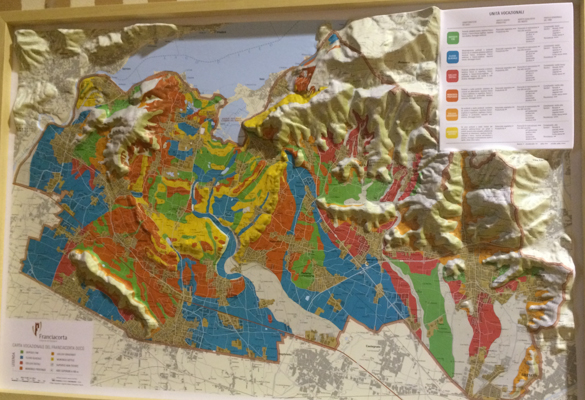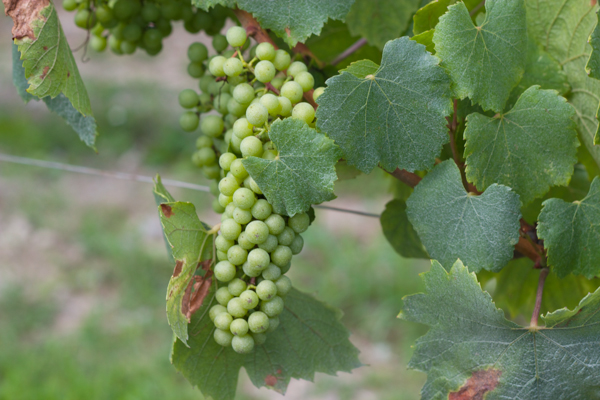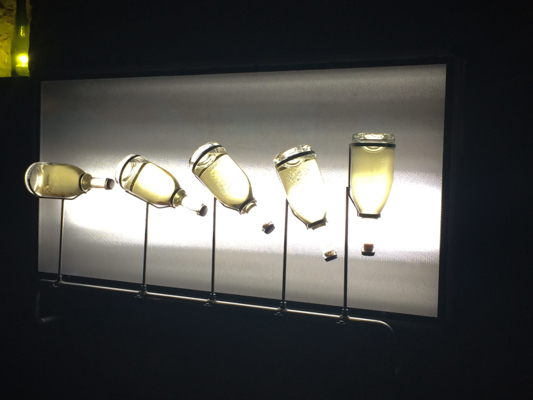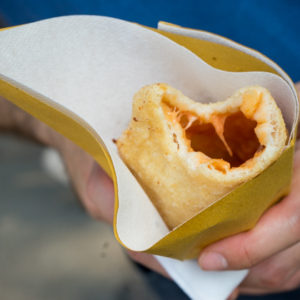
Franciacorta and Lago d’Iseo
Franciacorta, located to the west and south of Lago d’Iseo in Lombardia, is a sea of neatly arranged rows of green vineyards covering 6,000 hectares. It is a peaceful oasis in which grows Italy’s answer to Champagne. Great wine is often grown in areas of great beauty and Franciacorta is no exception. There are 80 wineries in Franciacorta producing 12 million bottles of wine a year, a drop in the bucket compared to Champagne‘s 300 million bottles.

The rocky soil in Franciacorta

Franciacorta divided by types of soil
The origin of the name, Franciacorta, is a debated topic. According to Ca’ del Bosco, it’s origin is from “Franzacurta” (deriving from the Latin franchae curtes, a region exempt from paying tribute). Franciacorta is a relatively new wine region, emerging after the Second World War. The soil has very large rocks in it, which made it difficult to cultivate. The Berlucchi family decided to try to plant vineyards instead. French grapes had been planted here for centuries, possibly introduced by the monastaries, but had been destroyed by phylloxera at the end of the 19th century. When the vineyards were replanted, they used the same French grape varieties. While the Berlucchi family were the first to produce Franciacorta in this area in the 1960’s, the Zanella family (owners of Ca’ del Bosco winery) and Bellavista followed suit.

Grapes destined for sparkling wine
It was one of the first regions to receive the DOC designation in 1967 and in 1995 it was awarded a DOCG distinction. Franciacorta has the strictest regulations out of all the areas in the world producing DOCG méthode champenoise wines (also known as Metodo Classico, Champagne method or traditional method and means that a secondary fermentation takes place in the bottle), regulated by the Consorzio Vini Franciacorta. Only Pinor Noir, Chardonnay and Pinot Bianco grapes are allowed. The grapes must be hand harvested in baskets with a maximum capacity of 18-20 kg.

The stainless steel tanks for the first fermentation
The still wines are pressed, matured in stainless steel tanks and then blended. The blended wine is bottled with sugar syrup and wine (called “tiraggio“) to balance out the high acidity in the wine.

Second fermentation in the bottle
The wine then undergoes a second fermentation in the bottle on the lees (dead yeast cells). During this fermentation the bubbles develop. This period must be no less then 18 months for the non-vintage wine, 30 months for the vintage and at least 60 months for the Riserva. They also have minimum amounts of time before release (including the time on the lees) which are 25 months for non-vintage and 37 months for vintage.

The process of remuage demonstrated
The sediment is in the bottle is then gently brought to the neck of the bottle through a process known as ‘Remuage‘. Remuage was traditionally done by hand, by gently rotating and tilting the bottle a specific amount everyday to coax the sediment to the neck. Today it is mainly done mechanically. The sediment is removed by freezing it, a process known as ‘dégorgement‘.

Ca’ del Bosco Franciacorta Saten
Franciacorta produces the same range of Extra-Brut (extra dry with 6 grams per litre of residual sugar), Brut (less than 15 grams), Extra-Dry (12 to 20 grams), Sec (17 to 35 grams) and Demi-Sec (33 to 50 grams) sparkling wines as champagne. Franciacorta also produces a wine called, “Satèn” which is made from only white grapes (also known as “blanc du blanc”) with a slightly lower atmospheric pressure (known as crémant style). They also produce a wine called Pas Dosé or Pas Operé which is bone dry and have not gone through the tiraggio process.

Bellavista
Some of the best producers of Franciacorta DOCG include Barone Pizzini, Bellavista, Berlucchi, Biondelli, Ca’ del Bosco, Cà del Vént, Cavalleri, La Montina, Il Mosnel and Ronco Calino.

Curtefranca Bianco Terre di Franciacorta DOC

Carménèro IGT Rosso di Sebino
There are also still red and white wines, the best of which can be labeled DOC Curtefranca (previously DOC Terre di Franciacorta). The red wines tend to be of Bordeaux style made from Cabernet Sauvignon, Cabernet Franc and Merlot with lesser amounts of Nebbiolo and Barbera allowed. There are however some Burgundian style red wines made from Pinot Nero. The white wines are Burgundian style made from Chardonnay and Pinot Bianco grapes.





Leave a Reply